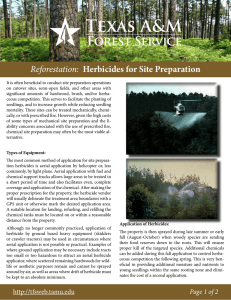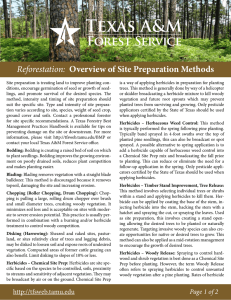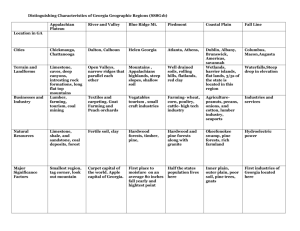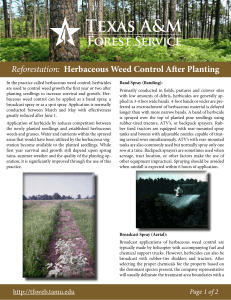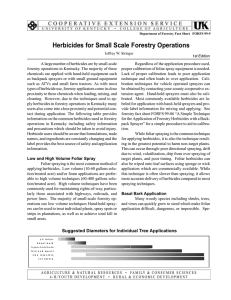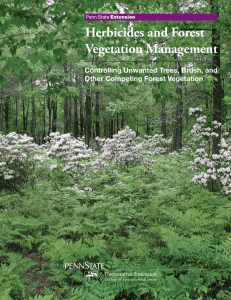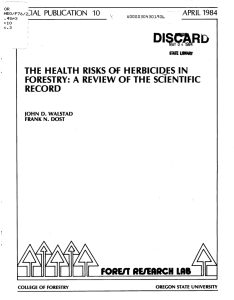Timber Management:
advertisement
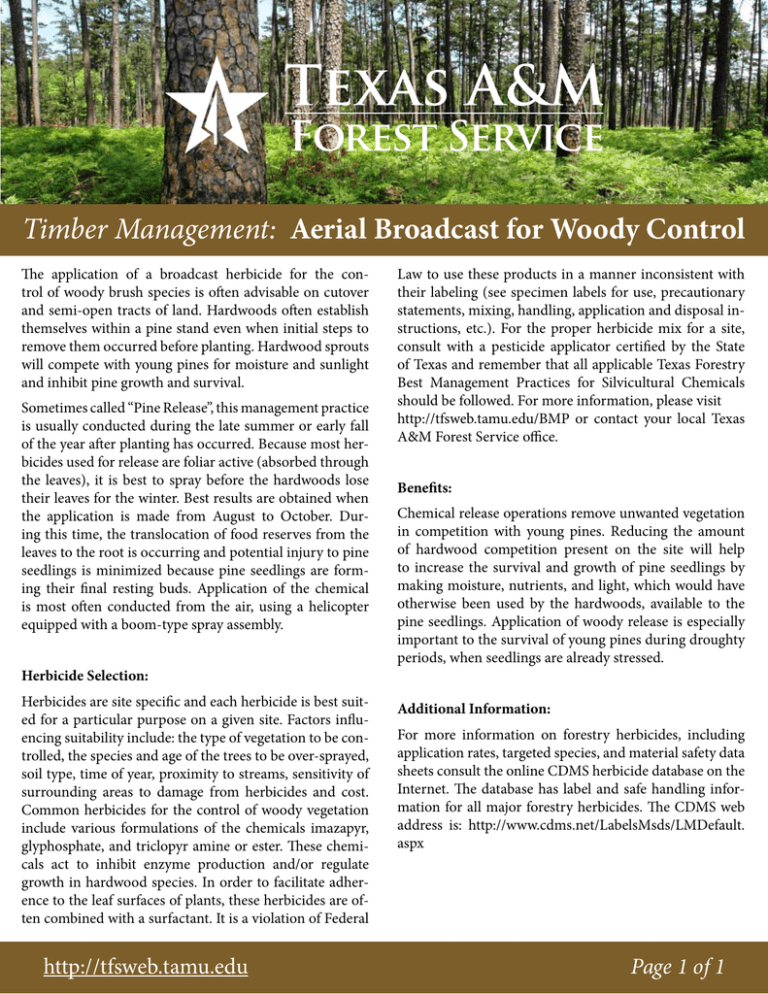
Timber Management: Aerial Broadcast for Woody Control The application of a broadcast herbicide for the control of woody brush species is often advisable on cutover and semi-open tracts of land. Hardwoods often establish themselves within a pine stand even when initial steps to remove them occurred before planting. Hardwood sprouts will compete with young pines for moisture and sunlight and inhibit pine growth and survival. Sometimes called “Pine Release”, this management practice is usually conducted during the late summer or early fall of the year after planting has occurred. Because most herbicides used for release are foliar active (absorbed through the leaves), it is best to spray before the hardwoods lose their leaves for the winter. Best results are obtained when the application is made from August to October. During this time, the translocation of food reserves from the leaves to the root is occurring and potential injury to pine seedlings is minimized because pine seedlings are forming their final resting buds. Application of the chemical is most often conducted from the air, using a helicopter equipped with a boom-type spray assembly. Herbicide Selection: Herbicides are site specific and each herbicide is best suited for a particular purpose on a given site. Factors influencing suitability include: the type of vegetation to be controlled, the species and age of the trees to be over-sprayed, soil type, time of year, proximity to streams, sensitivity of surrounding areas to damage from herbicides and cost. Common herbicides for the control of woody vegetation include various formulations of the chemicals imazapyr, glyphosphate, and triclopyr amine or ester. These chemicals act to inhibit enzyme production and/or regulate growth in hardwood species. In order to facilitate adherence to the leaf surfaces of plants, these herbicides are often combined with a surfactant. It is a violation of Federal http://tfsweb.tamu.edu Law to use these products in a manner inconsistent with their labeling (see specimen labels for use, precautionary statements, mixing, handling, application and disposal instructions, etc.). For the proper herbicide mix for a site, consult with a pesticide applicator certified by the State of Texas and remember that all applicable Texas Forestry Best Management Practices for Silvicultural Chemicals should be followed. For more information, please visit http://tfsweb.tamu.edu/BMP or contact your local Texas A&M Forest Service office. Benefits: Chemical release operations remove unwanted vegetation in competition with young pines. Reducing the amount of hardwood competition present on the site will help to increase the survival and growth of pine seedlings by making moisture, nutrients, and light, which would have otherwise been used by the hardwoods, available to the pine seedlings. Application of woody release is especially important to the survival of young pines during droughty periods, when seedlings are already stressed. Additional Information: For more information on forestry herbicides, including application rates, targeted species, and material safety data sheets consult the online CDMS herbicide database on the Internet. The database has label and safe handling information for all major forestry herbicides. The CDMS web address is: http://www.cdms.net/LabelsMsds/LMDefault. aspx Page 1 of 1
